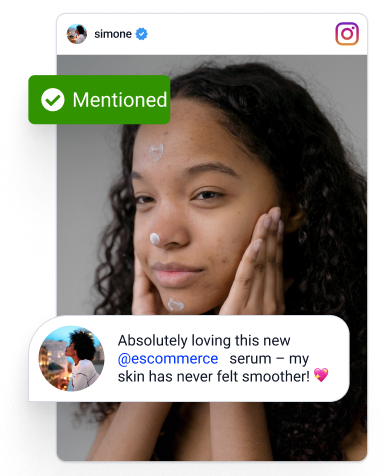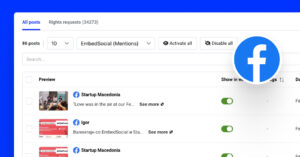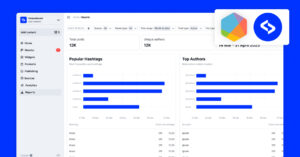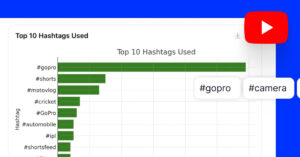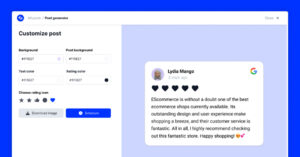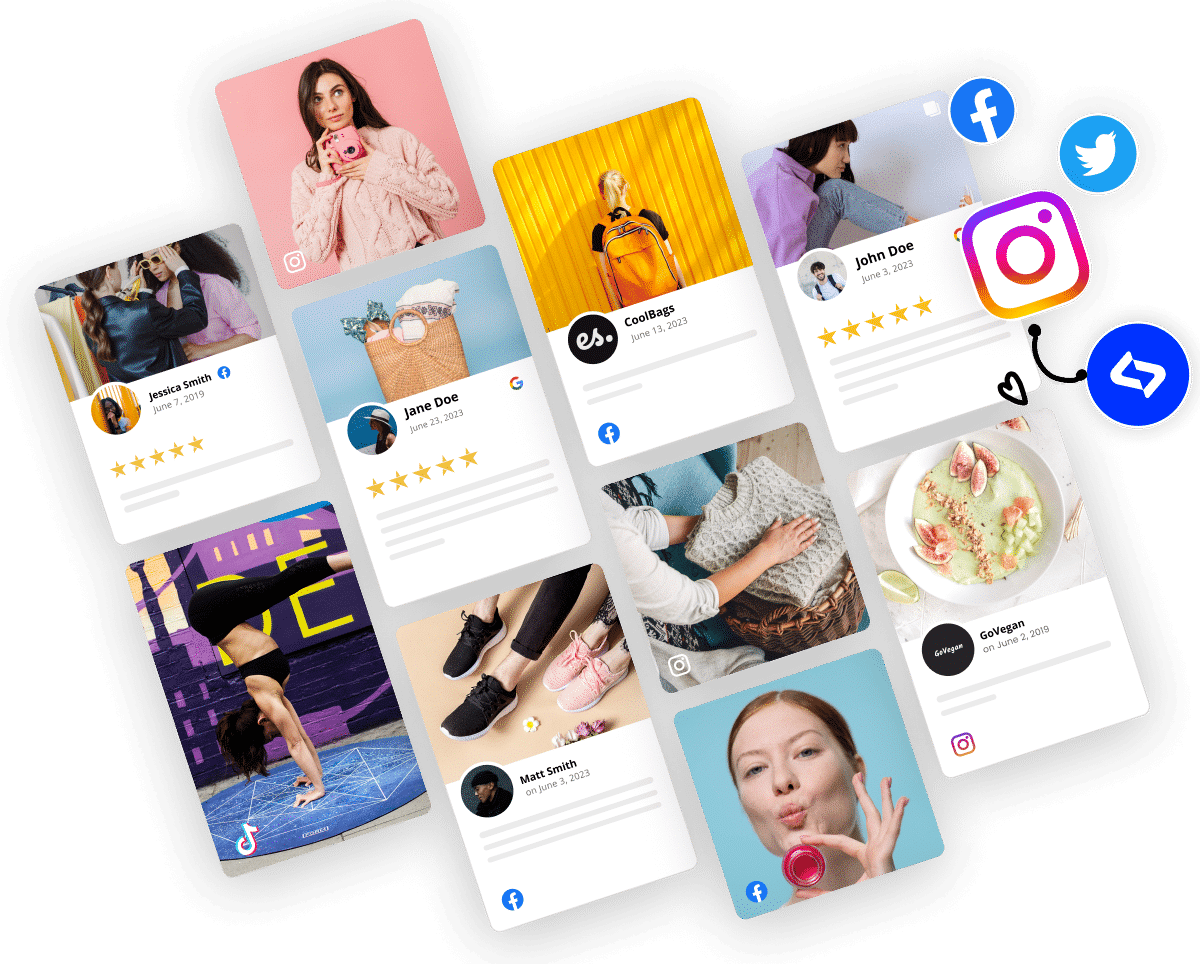Ever feel like your competitors are getting all the attention?
That’s where Share of Voice comes in—a metric that shows how much of the conversation your brand owns after your latest marketing efforts.
Keep reading as I explain what Share of Voice really means, how to measure it using sentiment analysis, and how to grow it to dominate your niche.
Let’s make sure your brand gets heard!
What is Share of Voice?
Share of Voice (SOV) is a marketing metric that shows how much presence your brand has in the market compared to your competitors. It reflects how often people see or hear your brand across different channels—such as search engines, social media, news mentions, or paid advertising—relative to the total mentions or impressions within your industry.
Let me try to define Share of Voice using a simple question: “Out of all the conversations and visibility happening in your niche, how much is about you?”
While rooted initially in advertising, ‘Share of Voice’ referred to the share of paid media a brand controlled. Today, SOV has evolved, and it covers all aspects of your digital presence—from SEO and PPC to social media and public relations.
Brands that measure Share of Voice will learn their visibility in the marketplace—the higher your SOV, the more dominant you are in the conversation.
As such, it’s an important consideration in every social media listening strategy, showing you exactly how you fare against your direct competitors.
Market share vs. Share of Voice
While market share and Share of Voice are often mentioned together, they measure two very different aspects of brand performance.
- Market share is the percentage of total sales or revenue your brand captures within a specific industry or category. It’s a financial metric that shows how much of the market’s buying power belongs to you compared to your competitors.
- Let’s say you run an energy drink company, and the total revenue of the energy drink market is $1 billion annually. If your brand generates $150 million in sales, your market share is 15%.
- Share of voice, on the other hand, measures your brand visibility—how often your brand is seen, heard, or mentioned across different marketing channels relative to others in your space. It doesn’t look at sales, but at attention and awareness.
- In the same industry, let’s say there were 10,000 social media mentions about energy drinks last month. If your brand were mentioned 2,500 times, your Share of Voice on social media would be 25%.
Here’s a quick comparison:
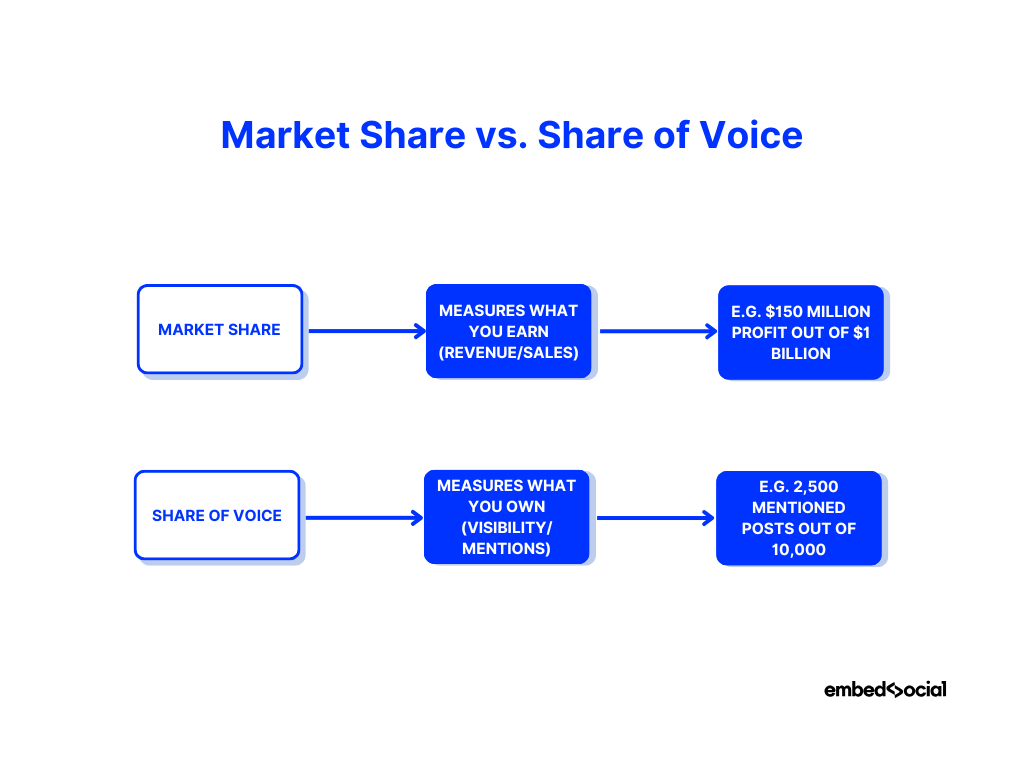
Why does a higher ‘Share of Voice’ matter?
A higher Share of Voice isn’t just a vanity metric – it signals market dominance and long-term growth. Here’s why it’s worth tracking and increasing:
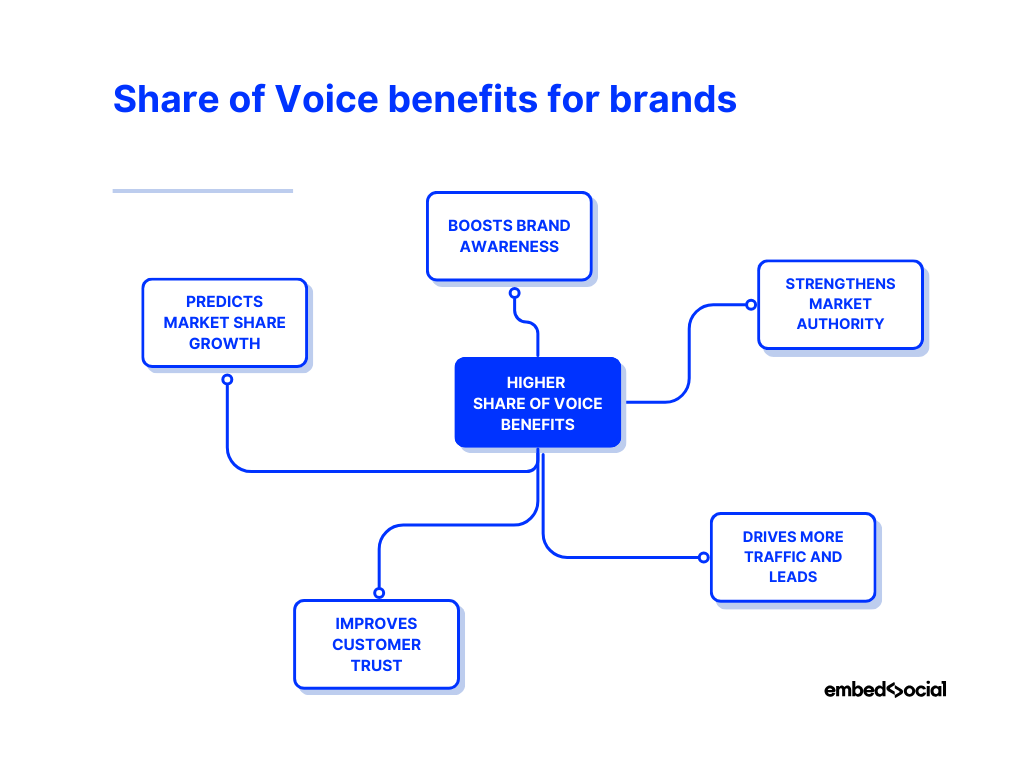
- Boosts brand awareness – your brand stays top-of-mind for customers across channels;
- Strengthens market authority – being mentioned more often builds credibility and positions your brand as a leader;
- Drives more traffic and leads – visibility across local SEO, social, and PR can bring more visitors to your site and funnel.
- Improves customer trust – consistent visibility helps reinforce brand reliability and builds familiarity;
- Predicts market share growth – brands with a substantial Share of Voice often gain a bigger slice of the market over time.
When you build a dominant Share of Voice, you will gain the visibility and leverage to outpace your competitors, thus increasing your profits.
How to Measure Share of Voice?
The core formula to measure Share of Voice (SOV) is simple, and it helps you understand your brand sentiment visibility compared to others. The process may differ slightly depending on the channel you are analyzing.
How to find Share of Voice via the standard formula?
The standard calculation is straightforward:
(Your brand’s mentions or impressions ÷ Total mentions or impressions in your industry) × 100
Once you apply this formula, you’ll get a percentage that shows your brand’s portion of the overall conversation or visibility in your niche.
Measuring SOV by marketing channel
However, for a complete picture, you must measure your SOV across channels:
- Social media – track mentions, tags, hashtags, and engagement using tools like EmbedSocial, Brand24, Sprout Social, Mention, etc.
- Example: If your brand had 2,000 mentions out of 10,000 total mentions in your industry, your social media SOV is 20%.
- SEO (Search Engine Optimization) tools like Semrush or Ahrefs let you see how your rankings and organic visibility compare to competitors’.
- Example: You can calculate it based on keyword positions, traffic share, or visibility scores. If you are not ranking on the first page of Google Search, you need to work on your visibility.
- PPC (Pay-per-Click Advertising) – Google Ads offers impression share metrics, representing your paid visibility share in search results.
- Example: A 75% impression share means your ads appeared in 75% of the auctions you were eligible for.
- PR and media coverage – use media monitoring tools to analyze how often your brand is mentioned in news articles compared to competitors.
- Web traffic or branded searches—track how many people search for your brand or visit your site versus others in your industry.
Remember: Your Share of Voice will be most meaningful when measured consistently over time and compared directly to your top competitors.
How to calculate Share of Voice for Free?
You need the right Share of Voice calculator if you want to quickly assess your current SOV across your industry and take the right actions for your brand.
One such option is the free Share of Voice Calculator by EmbedSocial, which can be used in only a few straightforward steps:
Step 1: Create an EmbedSocial account
First, you have to create an account in EmbedSocial, which will allow you to aggregate the social media content the tool needs to determine your Share of Voice.
Step 2: Connect your social media sources
Now, you have to hook up all your social media platforms to EmbedSocial, including Instagram hashtags and mentions, Threads keywords and mentions, and even X hashtags:

Step 3: Export the data for the Share of Voice analysis
To get what you need for the tool to analyze your Share of Voice, go to ‘Monitor’ (left sidebar) and press ‘Export’ (top-right corner). Then, once you access the corresponding section, choose your parameters, such as source, media type, time range, etc., and press ‘Download report’:
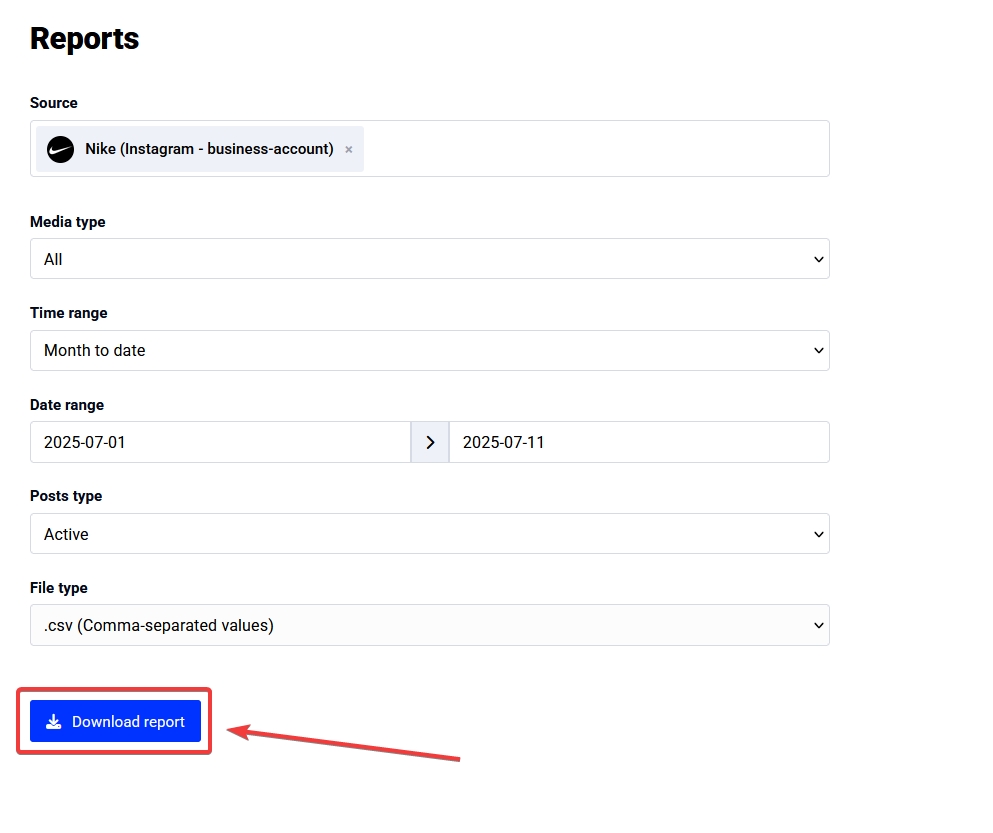
Note: You must download your data in a .csv format!
Step 4: Format the table for the analysis
For the tool to work optimally, you must format the .csv file you downloaded previously. Your table must include the following columns:
- Post URL
- Post caption
- Platform
- Source
- Content type
- Hashtags used
- Date of creation
- Author name
- Images link
- Videos link

Step 5: Use the EmbedSocial’s Share of Voice tool
Finally, you have to plug in the formatted file via EmbedSocial’s Share of Voice Calculator, after which you’ll get beautifully structured data you can immediately use:

Once you are done, you will get all the insights you need from all your social media accounts neatly presented in captivating graphs and charts.
Not to mention that EmbedSocial is a complete social media aggregator with all the social media analytics tools you need to get the most out of your UGC.
Other Share of Voice tools
If you’re looking for additional ways to track your brand’s visibility beyond EmbedSocial, several powerful third-party tools are available.
Here are three other trusted options that can help you measure and grow your Share of Voice across key marketing channels:
Brand24
Brand24 is a media monitoring and social listening tool designed to track mentions of your brand across the web. It provides real-time insights into conversations, helping you gauge your Share of Voice and respond to brand mentions quickly.
Here’s what makes Brand24 a go-to solution for SOV tracking:
- Real-time media monitoring – track mentions on blogs, forums, news sites, and social media in real time;
- Sentiment analysis – identify whether mentions are positive, neutral, or negative;
- Topic and hashtag tracking – monitor trends related to your industry or competitors;
- Influencer scoring – discover which voices are driving conversations around your brand;
- Exportable reports – generate automated Share of Voice and reputation reports.
Brand24 offers plans starting at $199/month (Individual), with higher tiers unlocking more mentions and advanced analytics.
Semrush
Semrush is a well-known SEO and digital marketing suite that includes tools for tracking Share of Voice, especially through its Position Tracking feature. It’s ideal for brands focused on measuring SOV in organic search.

Key features of Semrush’s SOV capabilities include:
- Position tracking – monitor how your keyword rankings compare to competitors over time;
- Visibility score – see how much of the SERP space your brand occupies in your niche;
- Competitive benchmarking – compare your SEO performance against top rivals;
- Tagging and segmentation – group keywords by intent, category, or product for more precise analysis;
- Scheduled reports – get weekly or daily updates on changes in search visibility.
Semrush starts at $139.95/month for the Pro plan, with Share of Voice tools included in the Position Tracking module.
Sprout Social
Sprout Social combines social media management with powerful listening and analytics tools. It gives brands a detailed view of how their voice compares to others across platforms like Twitter, Instagram, Facebook, and LinkedIn.
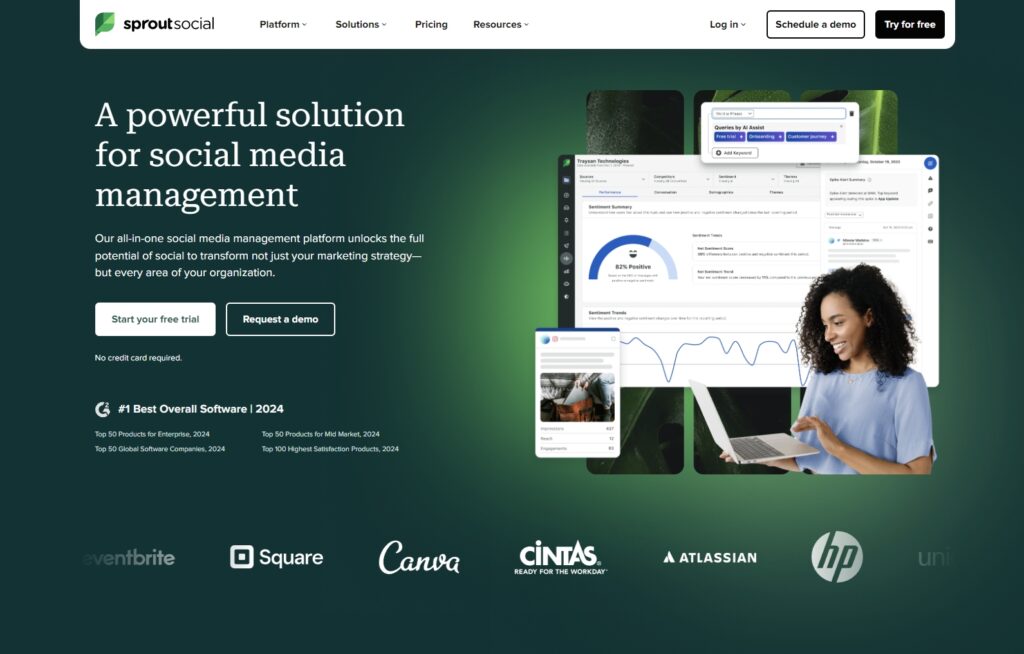
Notable Sprout Social features that support SOV tracking:
- Social listening reports – understand trends, conversations, and your brand’s share of them;
- Competitive analysis tools – see how your brand stacks up against competitors in engagement and mentions;
- Engagement breakdown – track which posts, platforms, or campaigns generate the most buzz;
- Smart inbox – manage mentions and conversations in one centralized space;
- Customizable dashboards – visualize Share of Voice and sentiment trends over time.
Sprout Social plans begin at $249/month per seat, with listening tools available in higher-tier packages.
How to increase your Share of Voice: 5 best strategies
If you want to boost your Share of Voice, you have to be much more than just louder. It takes being more relevant, consistent, and present across all channels that matter. Here are five strategic ways to increase your brand’s visibility:
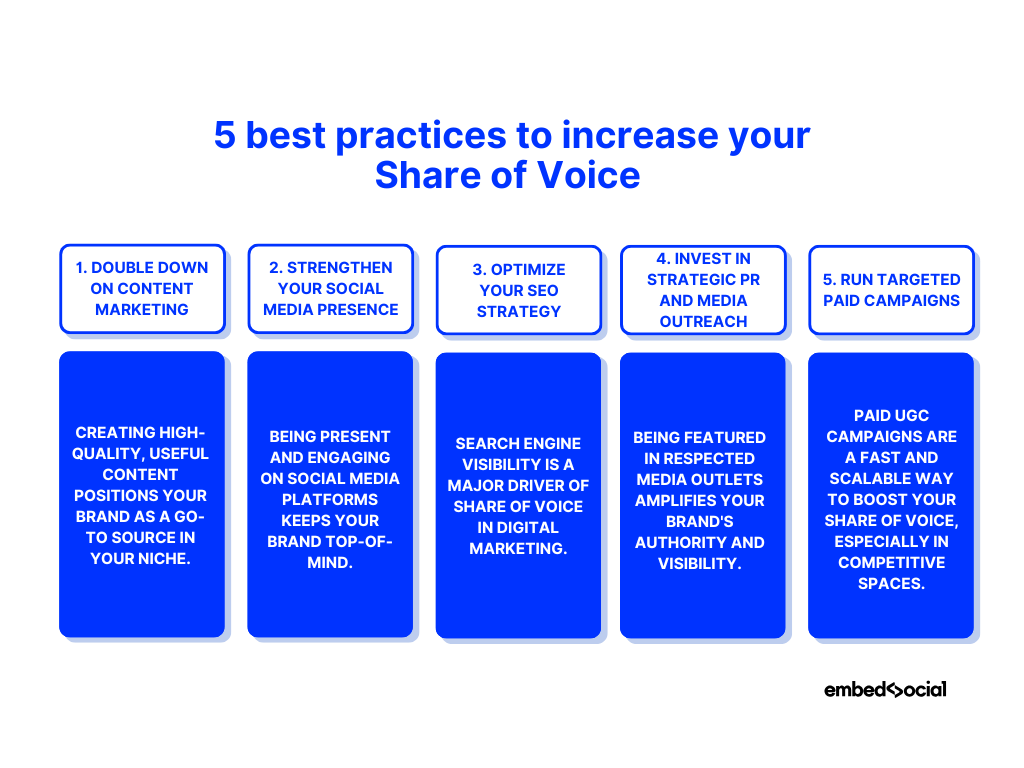
1. Double down on content marketing
Creating high-quality, helpful content positions your brand as a go-to source in your niche. The more valuable content you publish—whether blogs, videos, or infographics—the more likely you are to be referenced, linked to, and remembered.
Content marketing strategies build long-term visibility and help your brand dominate niche conversations, especially on search engines and social platforms.
Real-life scenario:
A SaaS company offering HR software launched a blog targeting long-tail keywords like “how to onboard remote employees”. Within 6 months, their blog posts ranked in the top 3 search results for multiple queries, increasing their Share of Voice in the HR tech space by over 40%.
2. Strengthen your social media presence
Being present and engaging on social media platforms keeps your brand top-of-mind. Responding to reviews, joining trends, and sharing relatable or educational content builds loyalty and encourages shares, mentions, and organic conversations.
The more your audience interacts with your content, the more your brand appears in their feeds and minds.
Real-life scenario:
A boutique coffee brand used Instagram Reels trends and TikTok UGC challenges featuring behind-the-scenes clips and coffee hacks. Their “how we roast” video went viral, doubling their follower count and earning hundreds of organic mentions, drastically improving their social Share of Voice within the specialty coffee scene.
3. Optimize your SEO strategy
Search engine visibility is a major driver of Share of Voice in digital marketing. Ranking for the right keywords—especially commercial or informational ones—ensures your brand shows up when your target audience actively searches for solutions.
Focus on keyword and campaign settings, improving your SEO metrics, getting more backlinks, and updating your content regularly to stay competitive.
Real-life scenario:
A B2B logistics provider identified gaps in their competitors’ content and created optimized landing pages for keywords like “international shipping solutions for eCommerce.” With strategic link building, their Share of Voice SEO jumped 60% in under a year.
4. Invest in strategic PR and media outreach
Being featured in respected media outlets amplifies your brand’s authority and visibility. Strong PR not only brings new audiences but also earns backlinks and media mentions that contribute to your overall Share of Voice.
Build relationships with journalists, pitch timely stories, and offer expert commentary to get coverage that counts.
Real-life scenario:
An ed-tech startup partnered with a research firm to publish original data on student engagement. They pitched the findings to major news outlets, leading to a measurable increase in media mentions and a sharp rise in brand awareness.
5. Run targeted paid campaigns
Paid UGC campaigns are a fast and scalable way to boost your Share of Voice, especially in competitive spaces. By targeting the right keywords, demographics, and platforms, you can ensure your brand gets seen where it matters most.
Use your Google Ads account, place social media ads, and even use display networks to promote your message.
Real-life scenario:
A local furniture retailer launched a geo-targeted Google Ads campaign during a holiday season sale. With 85% impression share on key product keywords, their store was top-of-mind for shoppers—leading to increased clicks, mentions, and store visits, all contributing to a dominant SOV during the campaign.
Conclusion: Take control of your share of voice and lead the conversation!
Ultimately, you have to pay special attention to your Share of Voice, as it’s an important signal of your brand’s visibility, relevance, and influence.
You gain authority, traffic, and trust when you track and grow it. And doing so only requires you to implement a few best practices, such as producing more content, enriching your social media, and optimizing your SEO strategies.
Thankfully, some tools can help you get a sense of your progress, both free and paid. For instance, EmbedSocial’s Share of Voice Calculator will quickly give you all the relevant numbers you need to see how you stack against your competition.
So, what are you waiting for?
Start measuring your SOV today to take charge of your brand’s space in the conversation so your audience starts listening to you more clearly!
FAQs about Share of Voice
How do you define Share of Voice?
Share of Voice (SOV) is a metric that shows your brand’s visibility across channels compared to your competitors’. It helps measure brand awareness and presence in your industry.
How do you calculate SOV?
You can calculate SOV using the formula (Your brand’s mentions or visibility / Total mentions in your industry) × 100. This formula can be applied to social media, SEO, PPC share, or PR channels.
What is SOV and SOM?
Share of Voice measures visibility, while share of market measures sales or revenue. SOV often predicts market share—brands that dominate attention tend to gain more customers.
What does Share of Voice mean in PR?
In PR, Share of Voice refers to how often your brand is mentioned in media outlets compared to competitors. It includes articles, press releases, interviews, and other editorial coverage, reflecting your PR presence in the public conversation.
What is an example of a Share of Voice?
Let’s say five clothing brands were mentioned a total of 10,000 times across Instagram in a month. If your brand were mentioned 2,000 times, your social media share of voice would be 20%.
What does 100% Share of Voice mean?
A 100% Share of Voice means your brand owns all the visibility within a specific channel or conversation. This is extremely rare and typically only occurs in highly niche markets or very targeted marketing campaigns with no competition.
How do I increase my Share of Voice?
You can increase your SOV by investing in content marketing, improving your SEO, engaging on all major social media networks, running targeted ad campaigns, and earning media coverage.
Is Share of Voice important for SEO?
Yes. In SEO, SOV reflects your organic search visibility compared to competitors. The more keywords you rank for—and the higher you rank—the greater your SEO share of voice.
